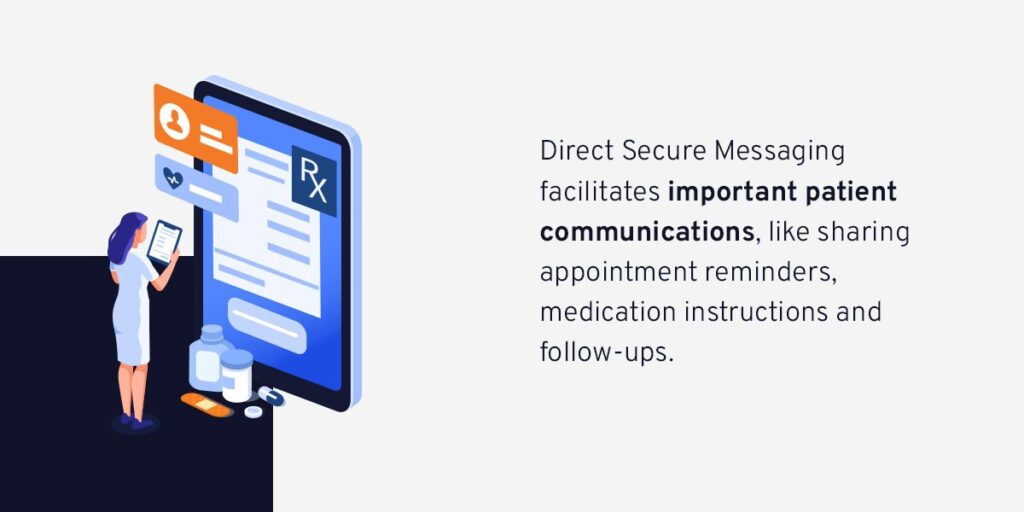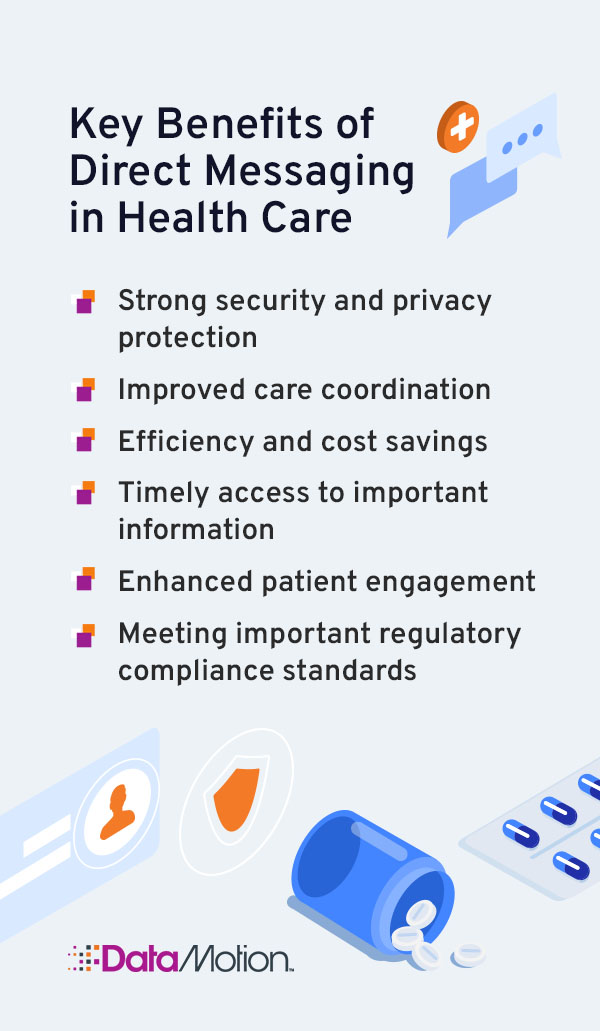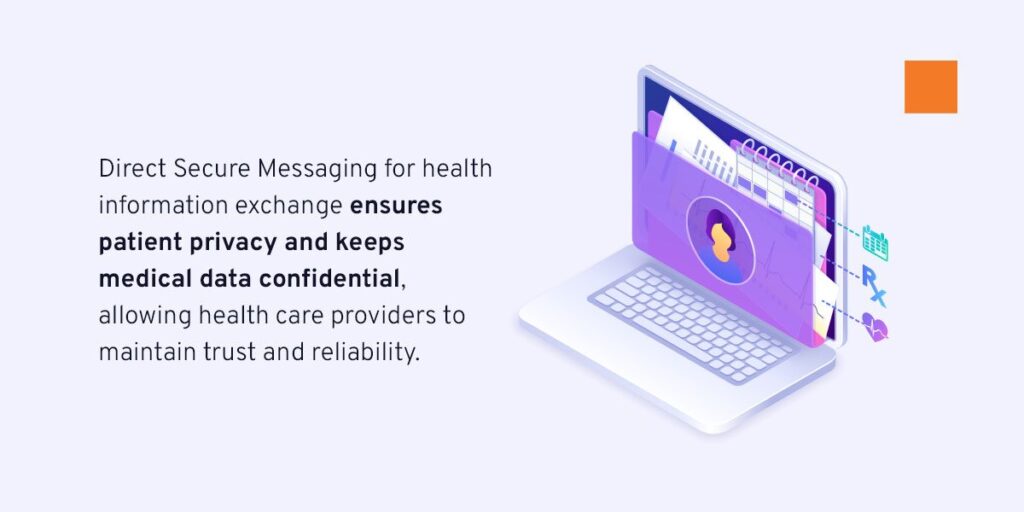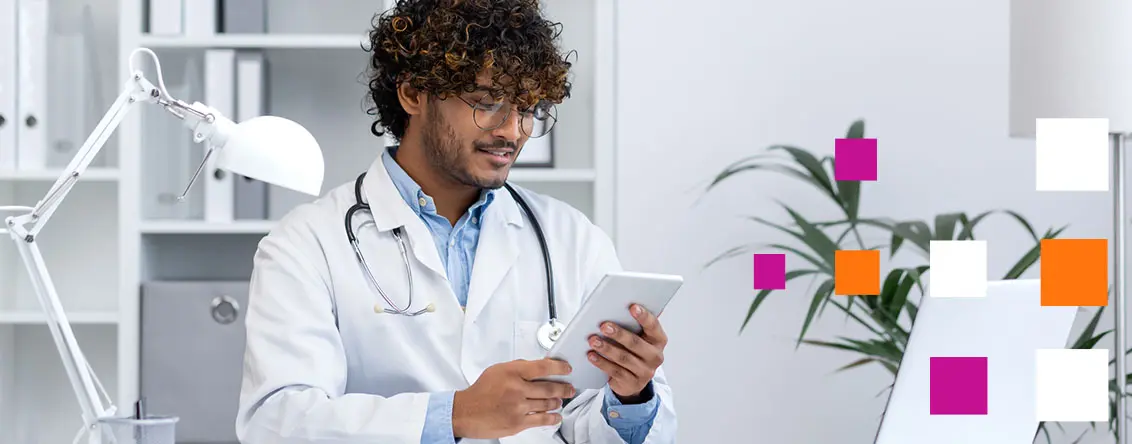If you work in the health care industry, you may have heard the terms “Direct,” “Direct Exchange,” “Direct Secure Messaging” or “DSM” several times. This type of messaging plays an important role in keeping protected health information (PHI), such as personal details or medical data, protected.
We are exploring the ins and outs of Direct Secure Messaging and why it is highly useful and advantageous for health care and information technology (IT) professionals.
What Is Direct Messaging?
Developed in 2010 under a part of a federal project for standards-based communications, Direct Secure Messaging is an American encryption standard for securely exchanging clinical health care data digitally. It specifies a standards-based method for sharing PHI in a highly secure and scalable way.
Healthcare providers and organizations must meet the specific requirements for data transfer utilizing Direct Messaging to qualify for incentive payments. These standards are outlined in the Meaningful Use Stage 1 criteria from the Office of the National Coordinator for Health IT (ONC) and are often demonstrated with electronic health records (EHRs). These records must comply with the ONC’s Health Information Technology Certification Criteria, which includes rules for using Direct Messaging for the electronic exchange and transition of care records.
Direct Secure Messaging is leveraged by:
- Hospitals
- Providers/clinicians
- Care team members
- Patients
- Laboratories
- Pharmacies
- Long-term care
- Skilled nursing
- Specialists
- Dental
How Is Direct Secure Messaging Used?
Here are some of the ways Direct is useful for communicating or sharing private health information:

- Transitions of care: Direct allows health care providers to exchange Continuity of Care Documents (CCDs) and Clinical Document Architecture (CCD-A documents) that include patient information, like medical history, medications and allergies.
- Physician consult requests: You can also use Direct Secure Messaging for sending consult requests to other physicians and getting input from specialists to inform diagnoses and treatment plans.
- Admit-Discharge-Transfer Requests (ADT): Providers also utilize Direct to send admission, discharge or transfer information to other care facilities or hospitals.
- Medication reconciliation: Direct Messaging allows providers to exchange information about medication to ensure accurate reconciliation.
- Lab/test results: Medical laboratories can utilize DSM to share lab and test results directly with care providers.
- Patient communication: Direct facilitates important patient communications, like sharing appointment reminders, medication instructions and follow-ups.
- Order submission: Another use of Direct Secure Messaging is transmitting orders to other facilities, such as imaging centers or labs.
- Report distribution: DSM allows providers to share medical reports, like pathology reports or discharge summaries, with other care professionals.
- Peer-to-peer collaboration: Another beneficial way to use Direct Secure Messaging is for secure communication between health care providers. They can share patient information securely to improve care coordination.
How Does Direct Secure Messaging Work?
Direct can be incorporated into a variety of user interfaces such as an email client, a mobile device, health care IT system portals or an automated data delivery feed. Any of these interfaces are capable of sending or receiving Direct messages. But in order to participate, both sender and recipient users will need a specific Direct email address provided by their health information service provider (HISP). Health care IT systems can integrate Direct in multiple ways depending on the desired workflow.
The Importance of Direct Secure Messaging for Health Care Professionals
Why should you care about Direct Secure Messaging as a health care professional? Direct ultimately helps care providers save costs while delivering improved quality of care.
On the clinical side, Direct Secure Messaging addresses gaps in transitions of care, which have been identified as a significant patient safety issue. The incomplete exchange of patient health information among providers when transitioning from one care environment to another is a point of vulnerability that can compromise the overall quality of care a patient receives.
On the business side, Direct Messaging can reduce or eliminate the costs associated with fax workflows by transitioning relatively expensive fax communication to less expensive email workflows.
Key Benefits of Direct Messaging in Health Care
Direct Secure Messaging offers many advantages for professionals in the health care industry, including:

- Strong security and privacy protection: DSM ensures that private health information remains secure as different health care entities exchange documents and consult one another. Direct employs advanced encryption and authentication to keep patients’ medical records confidential and accurate.
- Improved care coordination: A major benefit of direct secure messaging is improving and streamlining communications between providers to enhance care coordination. With a seamless way to consult with other professionals and experts, care providers can ensure they facilitate the most advantageous diagnosis and treatment for their patients.
- Efficiency and cost savings: Antiquated communication methods like faxing can be inefficient and expensive. Health care organizations can save significant time and money with Direct, as it reduces administrative burdens and streamlines communication.
- Timely access to important information: DSM enables providers to access the medical and patient data they need as they need it. This helps care providers quickly inform decision-making, reduce errors and ultimately deliver better quality care. Easily sending and receiving information in real-time improves interconnectivity and coordination.
- Enhanced patient engagement: Direct is an incredible method for the exchange of messages between health care providers and their patients. Those getting care can use DSM to ask questions or request appointments, helping them be active participants in their own care plans.
- Meeting important regulatory compliance standards: DSM can help health care providers stay compliant with essential regulations, such as the Health Insurance Portability and Accountability Act (HIPAA). Abiding by applicable privacy and security laws is simpler with one unified standard that all systems can leverage.
The Role of Direct Secure Messaging in Health Care Interoperability
In addition to the benefits above, Direct Secure Messaging promotes interoperability between different health care providers and systems. DSM adheres to standardized formats and protocols, which help streamline the exchange of data across various platforms.
Standardization allows providers to seamlessly integrate information from multiple sources for informed decision-making and collaboration with other medical experts. Interoperability is essential for health care systems to communicate quickly, securely and effectively.
Regulatory Compliance and Secure Information Transfer
Today, data security is more important than ever. Health care providers must ensure they use communication mechanisms, such as the following, that offer outstanding protection against unauthorized access:
- Encryption
- Digital certificates
- Access controls
- Audit logs
- Secure storage
In addition to featuring robust data security and abiding by important HIPAA guidelines, Direct Secure Messaging allows medical professionals to have peace of mind when transferring sensitive documents and messages.

How to Choose a Health Information Service Provider
Health care providers can obtain a Direct address through a health information service provider. A HISP helps authorized entities implement secure messaging infrastructure and technology platforms to support secure communication between different medical professionals.
The following are key considerations to help you determine the right provider for your specific practice:
- Scalability: Consider whether or not the HISP has the capabilities to accommodate the volume of messages your organization will require. Factors like network bandwidth and server capacity will impact DSM scalability and reliability.
- Support and training: Assess the quality and level of customer support and technical assistance the HISP can deliver for your practice. Ask about training opportunities for your team to learn how to maximize the benefits of DSM.
- Reputation: Always choose a health information service provider with a reputation for providing excellent services, like DataMotion. Ask other medical or IT professionals about their experiences and get insight into the HISPs they recommend.

Explore DataMotion Direct Secure Messaging HISP Services
Secure, efficient messaging is critical to the health care industry today. With the Direct Secure Messaging HISP services from DataMotion, your health care or IT organization can easily exchange medical data and patient information with a massive number of clinical endpoints within the DirectTrust network.
Our services help you provide better care to your patient by simplifying care coordination. You can get easier access to medical records, even if you don’t have an electronic health record system.
Ready to learn more about our ONC-certified Direct Secure Messaging service? Contact us online to speak with an expert today!




